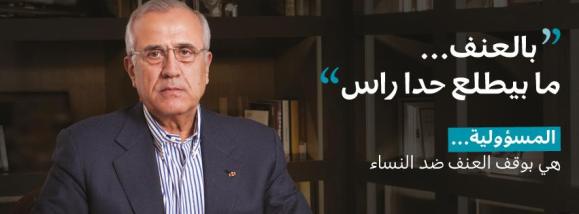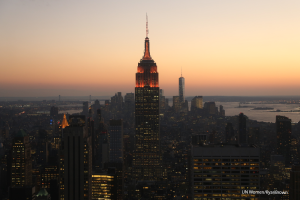By Saba Khattak
Pakistan has experienced military-led governments for thirty out of sixty-seven years of its existence. While the military plays the dominant role even in civilian democratic setups, violent conflicts within the country result from this militarization. Violent conflicts also intensify people’s need for military security to return the situation to ‘normal.’ I explore two questions in the context of Pakistan’s Swat Valley—a site of active conflict between 2007-2010: How do such conflicts impact women’s perspectives and rights? While military presence promises immediate and short-term security, does its’ continued presence detract from long-term peace?
Swat experienced a virtual Taliban take-over late in 2007 and was cleared of Taliban control in July 2009 after two military operations and the displacement of approximately 1.5-2 million people. Swati women were relieved to be rid of the Taliban brutalities and restrictions while many also blamed themselves for having supported the Taliban initially. But in the early period, Maulana Fazlullah (the local Taliban leader) had given them a sense of empowerment through his radio sermons, whereby he exhorted them to force their husbands to pray five times a day, to grow beards and work for a perfect society reflective of true Islamic principles. Power dynamics within the household changed to many women’s advantage while they also felt pious. When the Taliban took over, they meted out their own version of justice through brutal killings for what they considered offences, e.g., killing policewomen and men for serving the Pakistani government, killing primary healthcare workers for propagating fahashi (obscenity) through family planning, singers, dancers and beggars for following an “un-Islamic” way of life, and civil society activists and political party representatives for upholding women’s rights. Besides the killings, the severe restrictions on women’s movement prevented their access to education, health and livelihoods. Later, many women explained their support for Fazlullah by saying they were duped by his sermons and promises.
The fact remains that people’s perspectives change radically depending upon how they experience a conflict situation. In this particular case, women changed from hating the Pakistan government and viewing its army as bootlickers of the US (thanks to right wing views propagated by Fazlullah and others), to looking upon the army as their protector and savior.
Initially people appreciated the army’s role in ridding them of the Taliban and undertaking reconstruction and development. It rebuilt schools, colleges, hospitals, roads and bridges, and other infrastructure destroyed during conflict and later, floods in 2010. The issue of militarized development aside, men and women regained their mobility; women got enhanced opportunities to access work in both the public and private sector.
Within a year after the Pakistan army regained control of Swat, disillusionment with the military set in spurred by its highhanded attitude especially in connection with disappearances. As the army had the dominant role, it took control of detention centers under the police and put in people it suspected of Taliban links. The lack of accountability as well as the appearance of dead bodies of victims allegedly due to heart attacks at detention centers became an issue, especially for the women relatives (in many cases there were only women and children left behind in families) and human rights activists. Men did not dare protest lest they be hauled into indefinite detention, while women managed to organize themselves with the support of right-wing political parties as well as human rights organizations.
There were irritants also—long queues at check-posts on roads where people were stopped and physically searched. Men expressed greater unhappiness with the military than women. This was in part because the military assigned itself the role of a guardian even within the private sphere, e.g., it conducted house-to-house searches while men were ordered to wait outside. By entering the private sphere/home, soldiers established their authority over and above the male household heads. By ensuring women exercise their rights in the public sphere, army-men reinforced their dominant position vis a vis local patriarchies both in the private and public spheres thereby creating friction.
Furthermore, the military continued to exercise control over local civil administration to ensure security. Of great concern were the setting-up of ‘peace committees and jirgas’ whose heads were told to assemble ‘lashkars’ (local militias), and the setting up of ‘village defense committees’ (VDCs) whose members were given arms licenses and responsibility to ensure the security of their village. Many people used their VDC membership to settle old scores and enmities by declaring one person or another to be aligned with the Taliban. They also had the freedom to openly display their arms and status. All this was possible in the name of security. Thus pre-existing conflicts became part of the on-going conflict while local society became more militarized.
To conclude then, while militarization as seen in Swat provides immediate and short-term security, it simultaneously detracts from long-term peace by reinforcing militarist thinking and solutions. In the short term, Swati women have used the opening up of institutional spaces in the economic, social, political and legal arenas to their advantage by negotiating with public and private patriarchy effectively. The knowledge that the state supports them has helped them push institutional boundaries to exercise their rights whether in the form of police protection or court intervention in their favor. In turn, the different institutions no longer view women as passive beings to be protected, because now they are represented in the police force, in the legal system, and an integral part of development planning and policy. For women in Swat, the stakes are high, but then the payback is high too. Thus, their ‘bargains with patriarchy’ indicate greater awareness of the importance of having a collective voice.
Can this push for rights also help women change the larger framework of militarization that continues to set the terms of negotiating with patriarchy? This is not only a question that women in conflict contexts can respond to, but one that transnational feminist networks would need to take on as well.
Saba Gul Khattak is an independent researcher with a PhD in Political Science. She has been a Member (Social Sector) of the Planning Commission of Pakistan and Executive Director, Sustainable Development Policy Institute, Islamabad. Using feminist perspectives, Dr. Khattak has published widely on development and social policy issues, including peace and violent conflict, social protection, population, education, and labor. She serves in an advisory capacity on a number of national and international boards and commissions.


